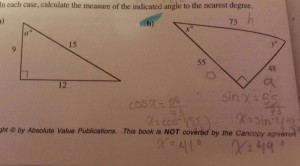Mutation: c’est le clé pour nos evolution. C’est comment nous avons évolué d’un organisme unicellulaire et devient les éspeces dominant de la planete. Ce proces est lent et ça durer plusieurs années pour se developper – mais a peu près chaque millénaire, l’evolution avance. Voila Scott Summers, Hank McCoy, Bobby Drake, Warren Worthington et Jean Grey: la premiere classe d’un institution prestigieux organisé par Professor Charles Xavier pour le doué. Avant qu’ils seront l’équipe fameux que nous savons, ils étaient des élèves perdu. Réunis par leurs differences, ils apprenent comment d’être accepter par l’un et l’autre et travaille comme un équipe et plus importante, une famille. Ensemble, ils faisent face aux préjuge, le racisme, la intolérance, et la discrimination.
– Roberto.
Pilote – 《Bienvenue.》
Scott, Jean, Hank, Bobby et Warren tous avaient quelque chose en commun: ils sont des mutants. Exclué par le majorité de la societé ils sont réunis par un homme, Professor Charles Xavier, un individuel télépathique qui lui offert une maison pour vivre de dans.
Émission #2 – 《Magneto.》
Erik Lensherr, un vieux ami de Xavier, vient chez Xavier et donnes un message pour lui. Les puissances de Jean devient pire, quelque chose que Scott et Xavier essayent de trouver un solution pour.
Émission #3 – 《X-Men.》
Xavier crée une groupe paramilitaire qui s’appellait les 《X-Men》pour se battre contre Magneto, qui vient un autre temps pour kidnapper Charles. Le X-Men prend ce qu’ils apprenent vers les leçons pour defendre leur maison.
ÉMISSION #1: BIENVENUE
《Whoa désol—》
《Qu’est que tu as fumé? On ne fume pas le cannabis…》
《JEAAAAAAAAAAAAN》
《Au revoir Kirby!》
《Les nouveaux mutants? Impossible.》
《Hank, ici j’essayes d’enseigner le contrôl.》
《Whoa, je peux… Voir.》
《 Ça c’est la maison?》
《Je m’appelle Charles Xavier, je peux t’aider》
《Warren?》
《Il n’a pas du contrôl.》















